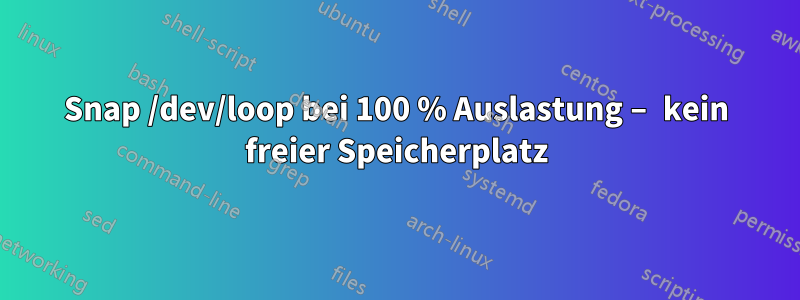
Freiraum:
thufir@dur:~$
thufir@dur:~$ df -h
Filesystem Size Used Avail Use% Mounted on
udev 3.9G 0 3.9G 0% /dev
tmpfs 794M 9.8M 785M 2% /run
/dev/mapper/ubuntu--vg-root 220G 37G 173G 18% /
tmpfs 3.9G 35M 3.9G 1% /dev/shm
tmpfs 5.0M 4.0K 5.0M 1% /run/lock
tmpfs 3.9G 0 3.9G 0% /sys/fs/cgroup
/dev/loop0 42M 42M 0 100% /snap/docker/171
/dev/loop1 84M 84M 0 100% /snap/core/3440
/dev/loop3 17M 17M 0 100% /snap/ubuntu-make/116
/dev/loop4 232M 232M 0 100% /snap/vuze-vs/2
/dev/loop6 17M 17M 0 100% /snap/ubuntu-make/109
/dev/loop7 84M 84M 0 100% /snap/core/3247
/dev/loop8 128K 128K 0 100% /snap/hello-world/27
/dev/loop2 77M 77M 0 100% /snap/drakon/1
/dev/sda1 511M 4.6M 507M 1% /boot/efi
tmpfs 794M 16K 794M 1% /run/user/121
/dev/loop9 17M 17M 0 100% /snap/ubuntu-make/123
tmpfs 794M 2.2M 792M 1% /run/user/1000
/home/thufir/.Private 220G 37G 173G 18% /home/thufir
thufir@dur:~$
Die Snap-Bilder sind zu 100 %. Ist das ein Problem? Wenn ja, was ist die Lösung?
Antwort1
Nein, es ist völlig akzeptabel, Snap-Bilder zu haben, die 100 % ihres Dateisystems beanspruchen. Tatsächlich soll es so funktionieren.
Ein Snap ist eine Squashfs-Datei, die Inhalt und einige Metadaten enthält, die dem System mitteilen, wie es sie bearbeiten soll. -https://docs.snapcraft.io/snaps/metadata
Denn Snap nutztSquashFS, ein komprimiertes schreibgeschütztes Dateisystem, die Dateisystemgröße beträgtstetsgerade groß genug, um seinen Inhalt aufzunehmen. Da das Dateisystem schreibgeschützt ist, ist außerdem kein zusätzlicher Speicherplatz erforderlich, da dieser zusätzliche Speicherplatz ohnehin nie genutzt werden kann.


